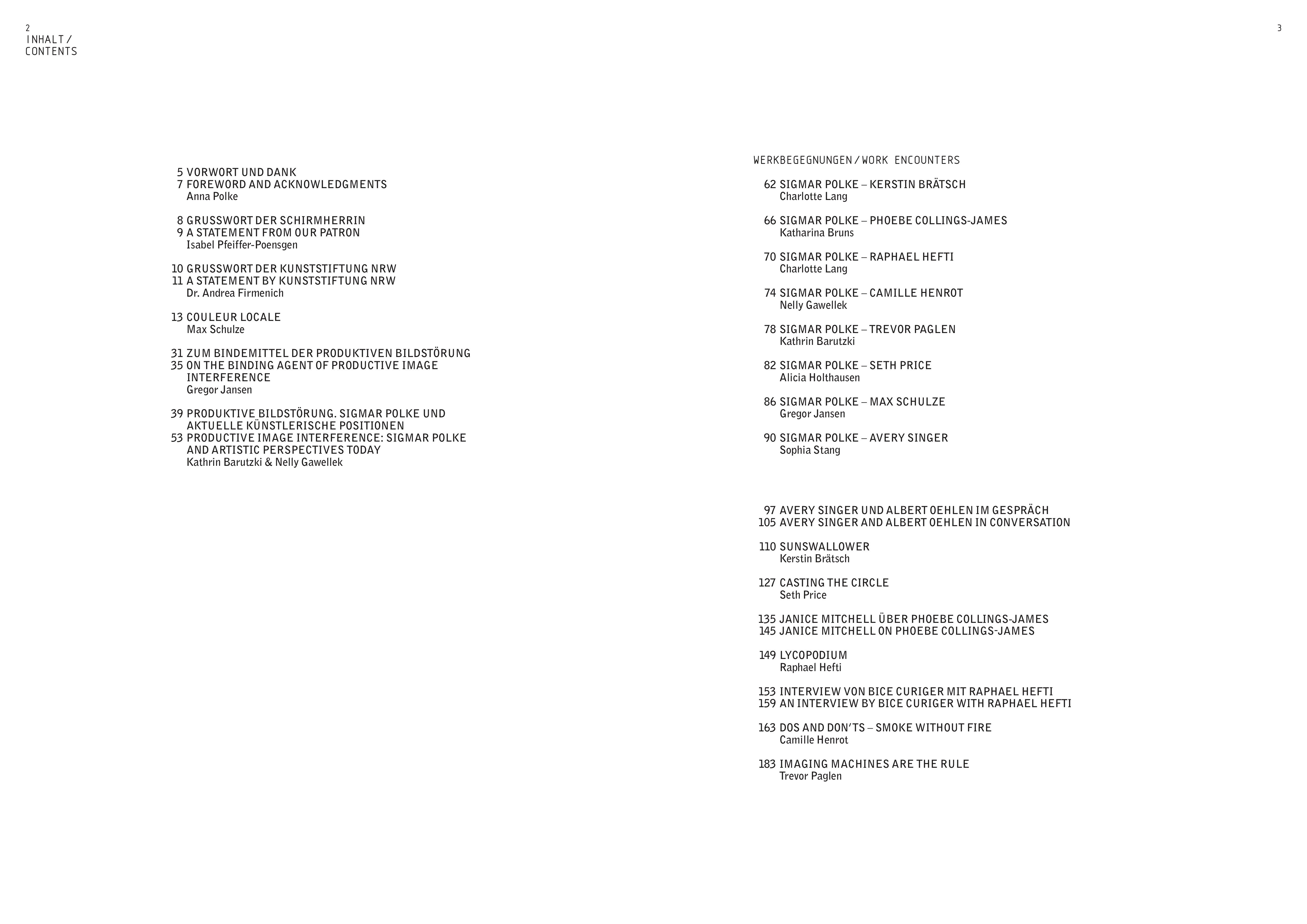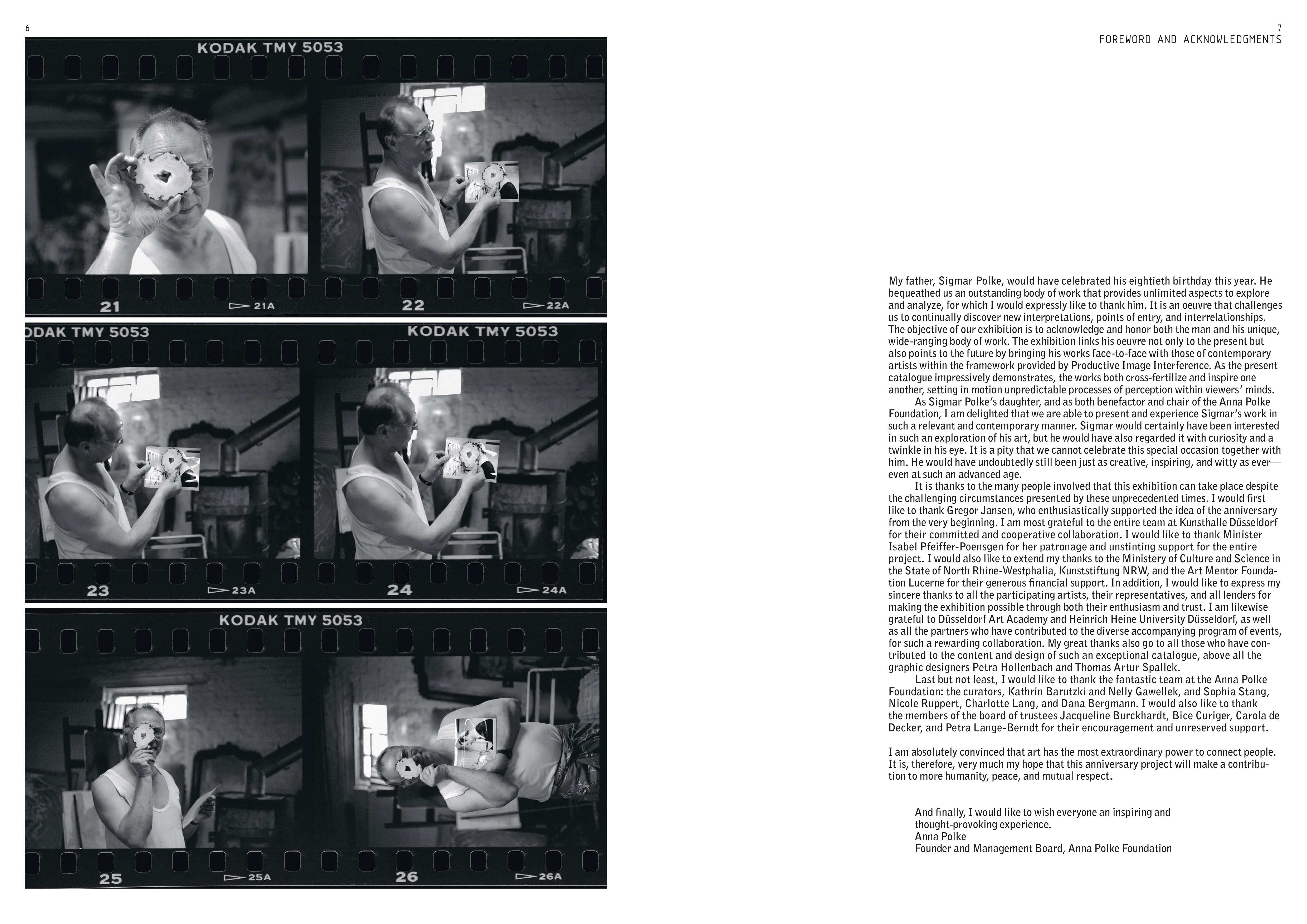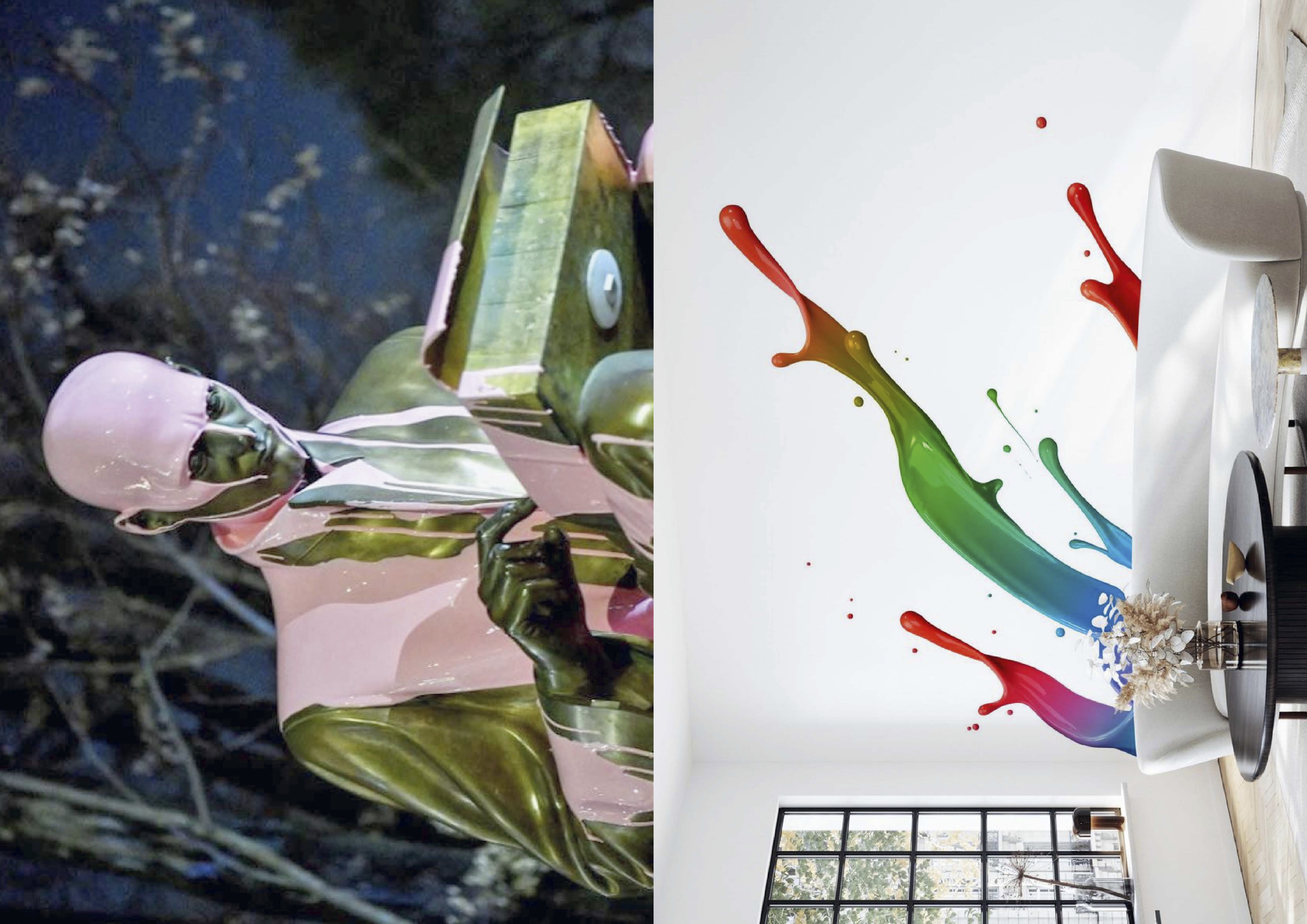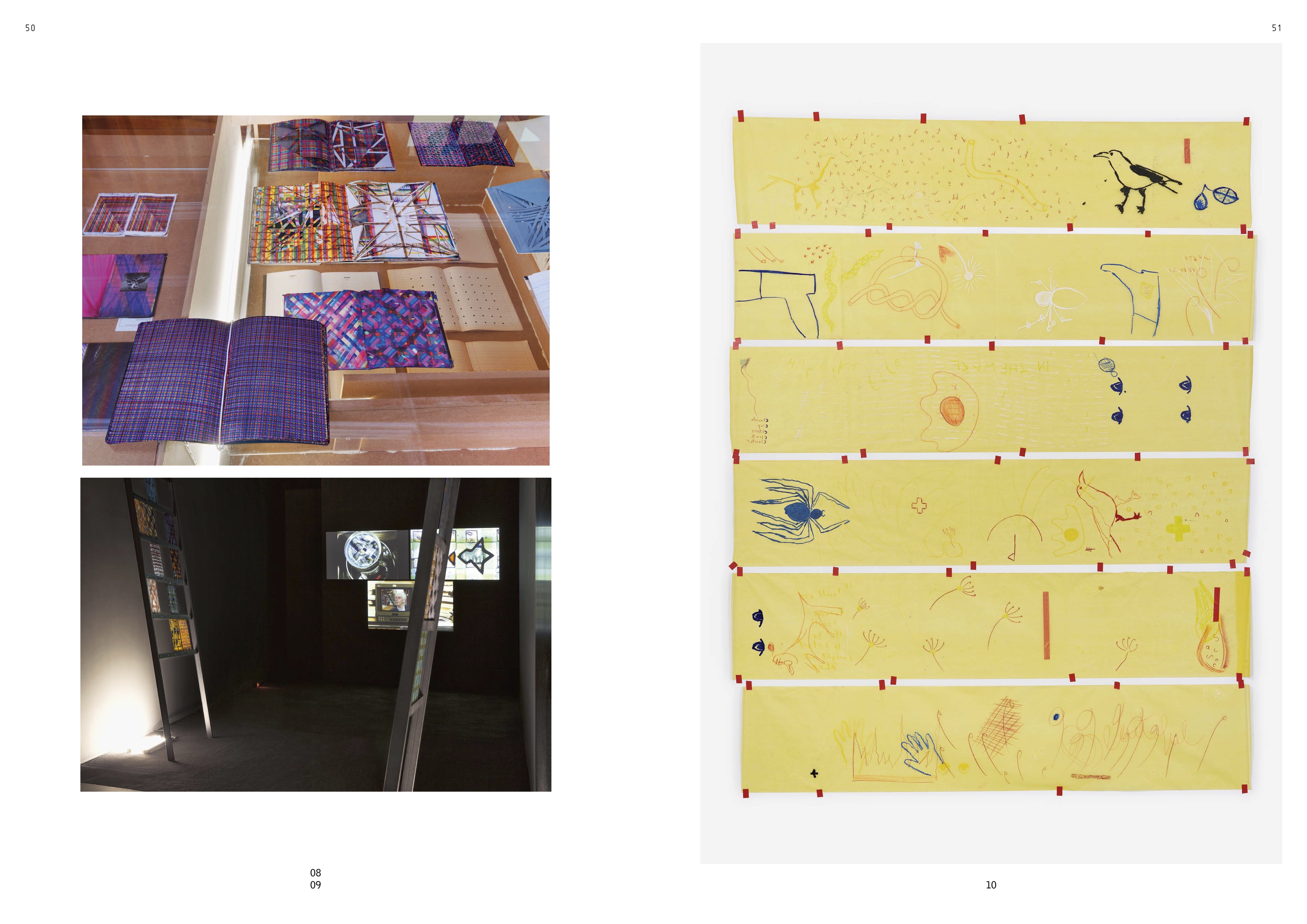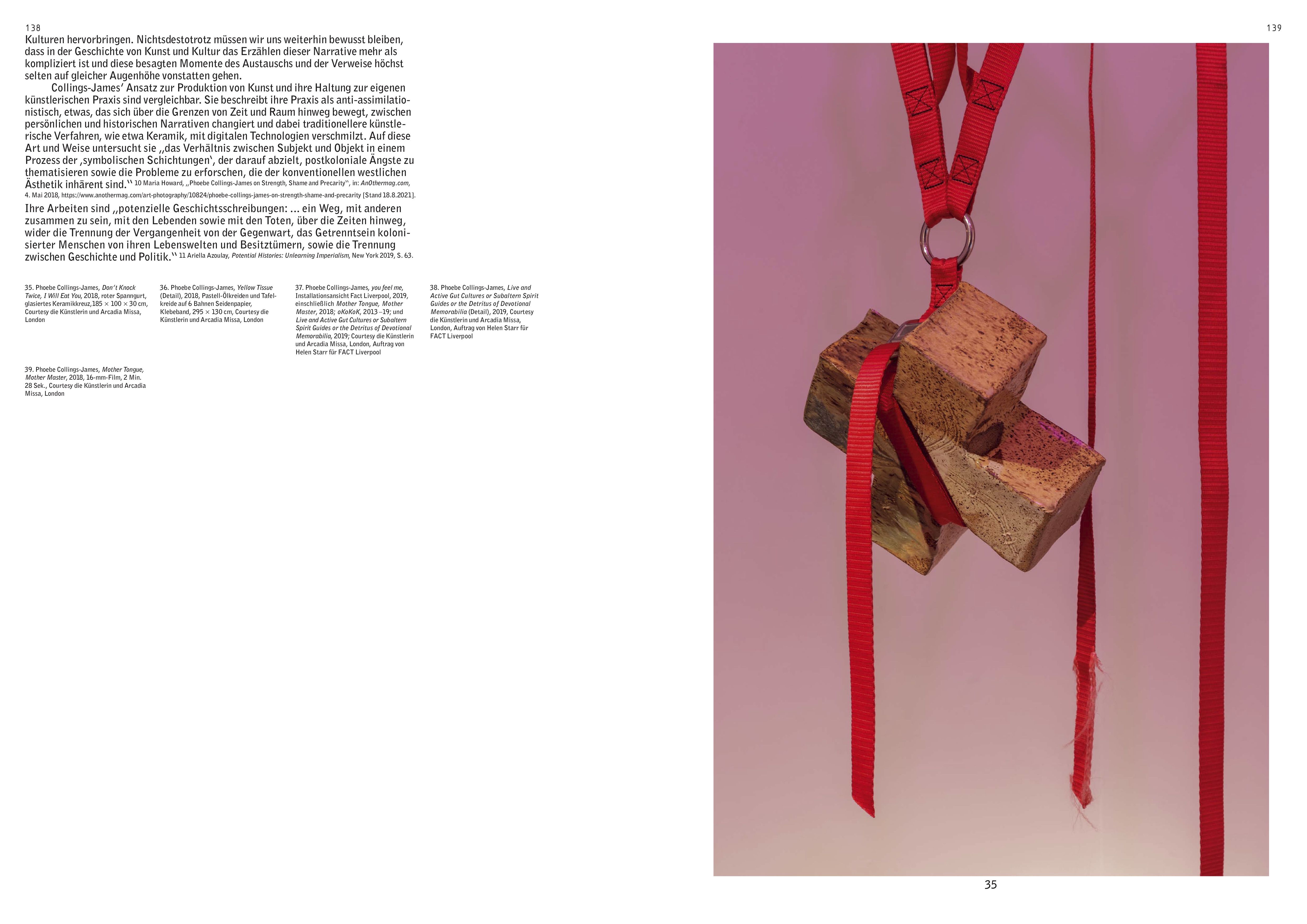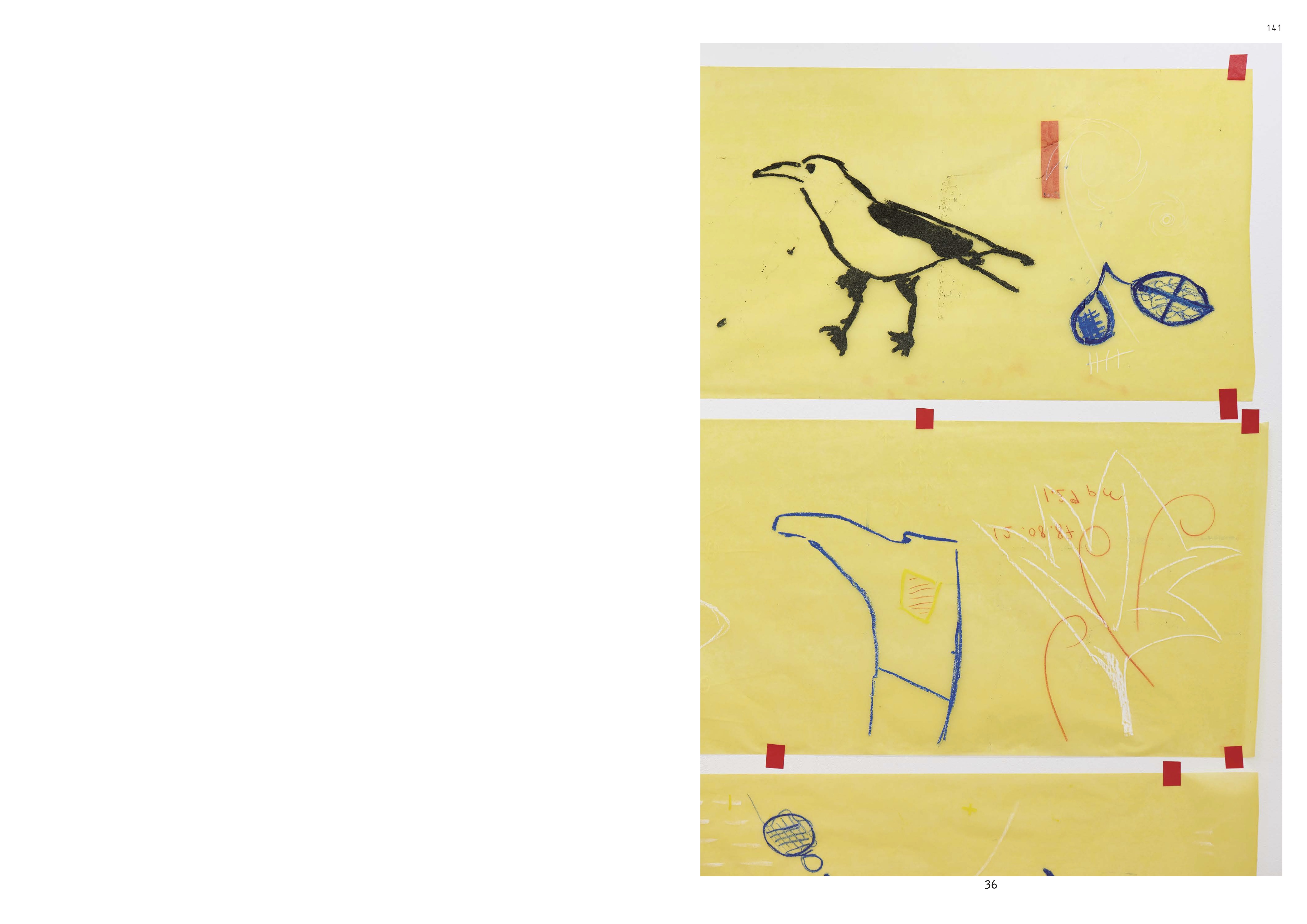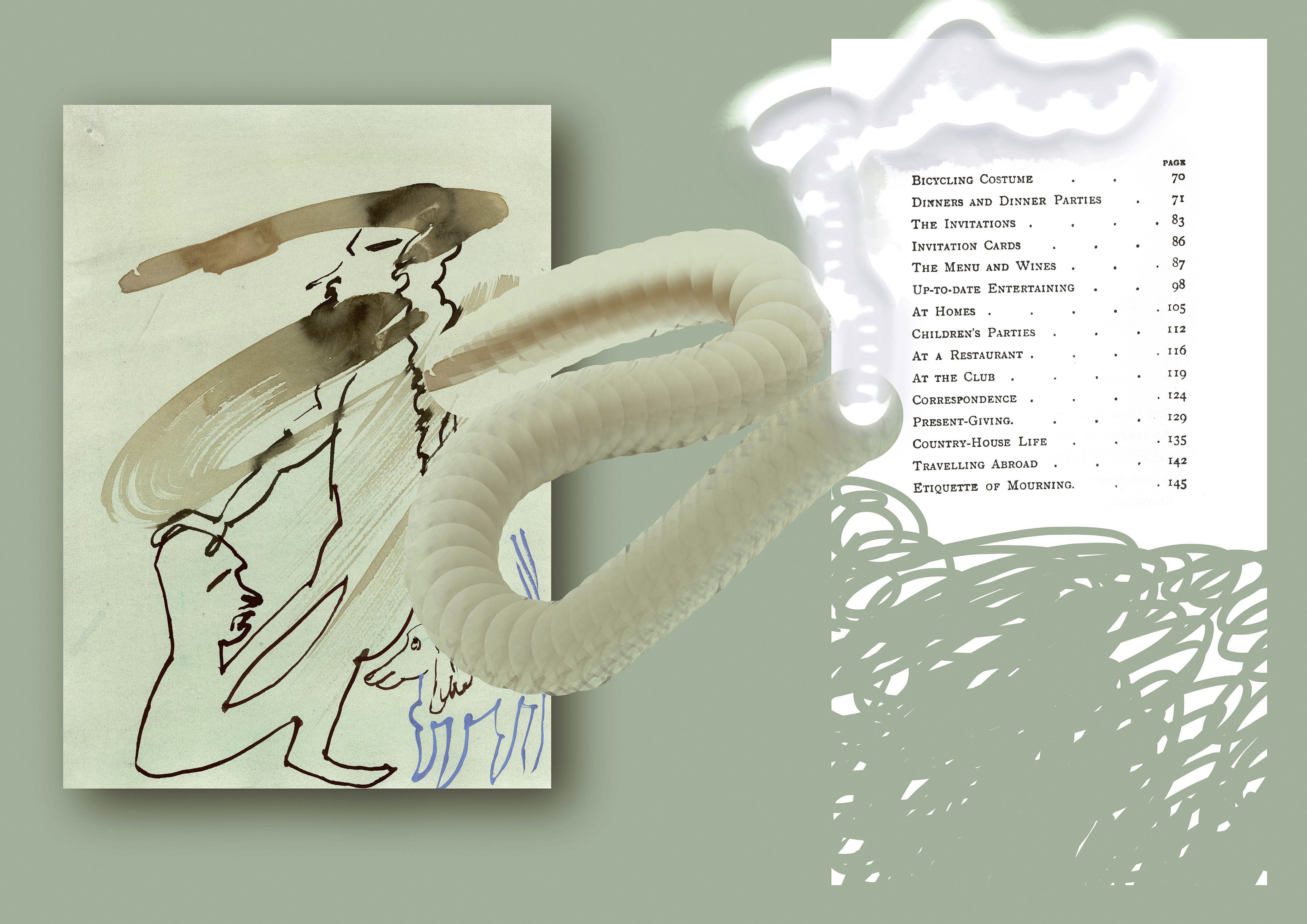Sigmar Polke
Productive Image Interference: Sigmar Polke and Artistic Perspectives Today
Kunsthalle Düsseldorf
-
EditorKunsthalle Düsseldorf, Anna Polke-Stiftung
-
LanguageGerman/English
-
Format21 × 29.7 cm
-
Features224 pages, softcover
-
ISBN978-3-95476-425-9
-
ReleaseNovember 2021
-
Price€38.00
Der Pionier der Bildstörung
We have long lived with the awareness that we cannot trust our eyes—that pictures, whether manufactured or technically generated, do not so much depict reality as rather play a key role in shaping it, transmission errors, losses of quality, hacks, and other disruptions included. Studying at the Dusseldorf Academy of Fine Arts in the early 1960s, Sigmar Polke (b. Oels, Lower Silesia, 1941; d. Cologne, 2010) soon took an interest in the mass-media imagery of his time. The replication and adulteration, transformation and recoding of these images became the motif of his raster-dot paintings and an early trademark of his art. Like Sigmar Polke before them, a generation of contemporary artists now finds inspiration in image interference. To mark his 80th birthday, the Anna Polke Foundation collaborates with Kunsthalle Dusseldorf to realize an exhibition curated by Kathrin Barutzki and Nelly Gawellek (both Anna Polke Foundation) with Gregor Jansen (Kunsthalle Dusseldorf). Titled Productive Image Interference, it presents Polke’s works in dialogue with contributions by Kerstin Brätsch, Phoebe Collings- James, Raphael Hefti, Camille Henrot, Trevor Paglen, Seth Price, Max Schulze, and Avery Singer.
The catalogue is the first book dedicated to an in-depth discussion of a central aspect of Polke’s oeuvre, drawing connections to contemporary art production. The visual practice of appropriating and sampling existing images with their cultural and political implications is discussed in essays by Kathrin Barutzki, Katharina Bruns, Nelly Gawellek, Alicia Holthausen, Gregor Jansen, Charlotte Lang, Janice Mitchell, and Sophia Stang. In conversations between Avery Singer and Albert Oehlen as well as Raphael Hefti and Bice Curiger, through work encounters and contributions created especially for the book by the participating artists, a panorama opens up starting from Polke’s point of view paired with contemporary perspectives by the other artists to create a survey of the engagement with the visual and historic contexts that shape our perspective on the world.

